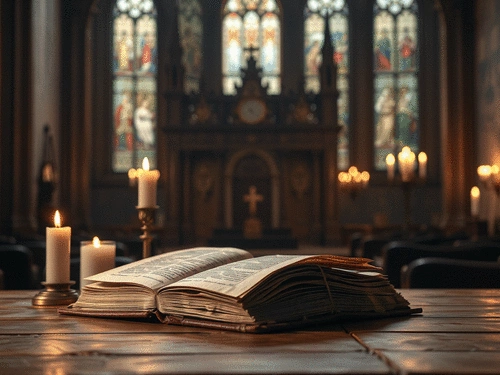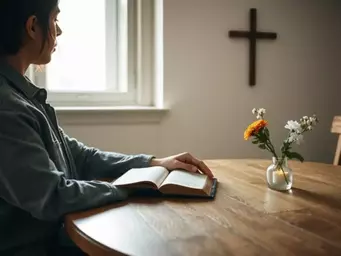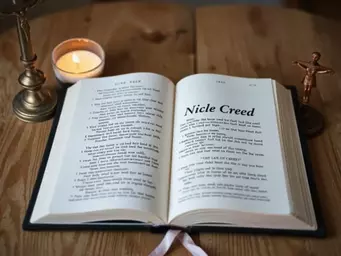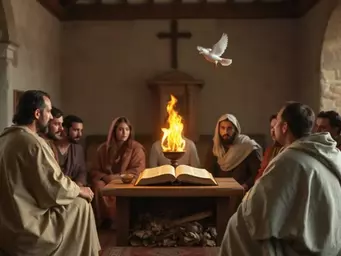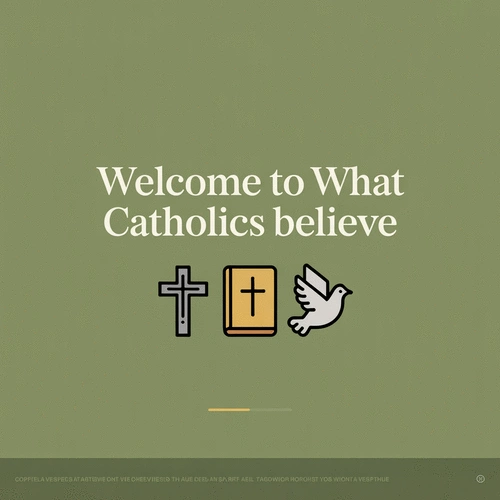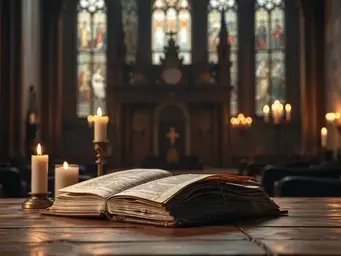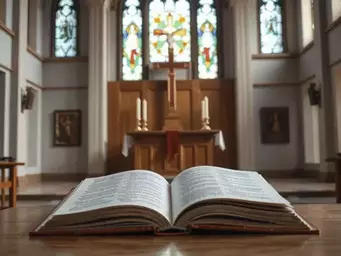As you dive into the rich history of the Catholic Church, consider how the resilience of its early followers shapes its teachings today. Each pivotal moment and figure contributes to a legacy that continues to inspire millions. What lessons can we draw from this remarkable journey?
What You Will Learn
- The Catholic Church's origins trace back to the early followers of Christ, emphasizing the importance of community and faith.
- Key figures like the apostles laid the groundwork for the Church, showcasing dedication and spiritual leadership.
- St. Peter's role as a foundational leader highlights the significance of commitment and governance in faith.
- The Church’s teachings on social justice and community engagement reflect its ongoing relevance in contemporary society.
- Catholic art and the liturgical calendar enrich worship, connecting believers to their faith through visual and temporal experiences.
- Engaging with resources like Vatican News and the Catholic Encyclopedia deepens understanding and connection to the Church's history.
Key Contributions to the Early Catholic Church
The following visual highlights the foundational roles of key figures in the early development of the Catholic Church:
St. Peter: The Rock
Recognized as the leader of the apostles and the first Pope.
- Pivotal recognition of Jesus as Messiah.
- Role in early Church governance.
- Martyrdom symbolizes ultimate commitment.
St. Paul: The Missionary
Crucial in expanding Christianity beyond Jewish communities.
- Extensive missionary journeys.
- Authored numerous Epistles.
- Shaped early Christian theology.
Understanding the Origins of the Catholic Church
The roots of the Catholic Church stretch back to the very beginnings of Christianity. Understanding these origins helps us appreciate the rich history and teachings that shape our faith today. Have you ever wondered how the early followers of Christ formed communities that would eventually become the Church we know? It's a story filled with inspiration and divine guidance!
As we explore this journey, we will look at key events and influential figures that played significant roles in the development of the Church. From the apostles to early leaders, each contributed to establishing a foundation that continues to support our spiritual lives today.
Historical Context: The Birth of Christianity
The birth of Christianity occurred in a time of great social and political upheaval. Following the death and resurrection of Jesus Christ, His teachings spread rapidly across the Roman Empire. This was a time when people desperately sought hope and meaning amidst turmoil. But how did these early Christians thrive in such a challenging environment?
- The spread of the message through oral traditions and early writings.
- The role of the Roman Empire in facilitating this spread.
- The persecution faced by early Christians and their unwavering faith.
These factors not only shaped the early Church but also set the stage for the development of key doctrines that we uphold today. Today, Christianity remains the largest religion globally, with a significant portion identifying as Catholic, as highlighted by studies on global Christianity.
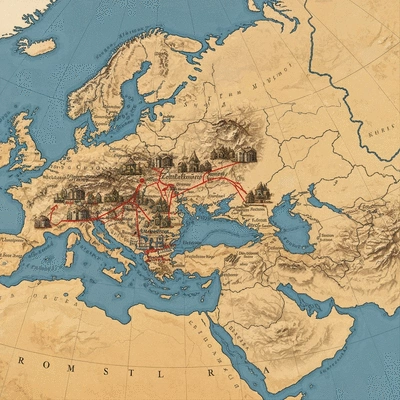
Key Figures: The Apostles and Early Leaders
Among the most significant contributors to the early Church were the apostles, who were entrusted with spreading Christ's message. They traveled far and wide, establishing communities and teaching the principles of the faith. These leaders played a crucial role in creating a structure for what would become the Catholic Church. Have you considered how their dedication and sacrifice laid the groundwork for generations to come?
- Peter, as the leader of the apostles, recognized as the first Pope.
- Paul, whose missionary journeys expanded the reach of Christianity.
- Other apostles who shepherded early communities and spread the Good News.
Their stories remind us that faith is often built on the courage and commitment of those who came before us.
The Role of St. Peter in Establishing the Church
St. Peter holds a special place in Catholic tradition as the rock upon which Jesus built His Church. This symbolism is profound; it highlights Peter's leadership and the responsibility that comes with faith. But what does it mean for us as modern Catholics? How can we draw inspiration from his life and leadership?
- His recognition of Jesus as the Messiah, a pivotal moment in the Gospels.
- Peter's role in the early Church's governance and teachings.
- The significance of his martyrdom, symbolizing ultimate commitment to Christ.
Reflecting on St. Peter’s contributions can deepen our understanding of the Church and encourage us to embrace our roles within it.
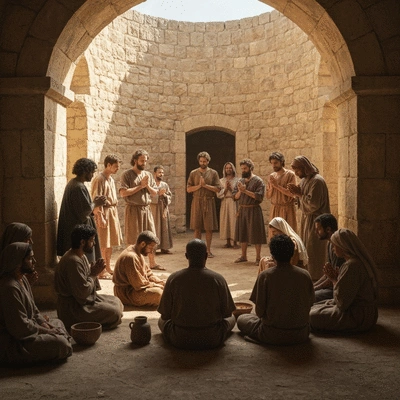
Tracing the Evolution Through Key Historical Eras
As we move forward, it’s essential to trace the evolution of the Catholic Church through various key historical eras. Each period brought about unique challenges and milestones, shaping our faith in profound ways. I invite you to join me on this expedition through time as we explore how the Church adapted and grew.
Engage with Your Faith
As we reflect on the origins and evolution of the Catholic Church, we invite you to consider: How does your personal faith journey connect with the rich history of the Church? Share your thoughts and experiences below!
Summarizing the Legacy of the Catholic Church
The legacy of the Catholic Church is rich and profound, influencing countless lives throughout history. It's essential to reflect on how the Church's teachings, traditions, and community have shaped not only the faith of its followers but also the broader cultural landscape. Understanding this legacy allows us to appreciate the depth of our spiritual heritage and its impact on modern society.
As we dive into the key takeaways from Catholic Church history, we can recognize several foundational aspects that define its enduring presence today:
- The importance of tradition and scripture, which serve as the bedrock of Catholic beliefs.
- The role of the sacraments in fostering a living faith and community.
- The Church's commitment to social justice and charitable works, reflecting Christ’s love in action.
- The resilience of the Church through centuries of trials, showcasing its divine guidance.
These elements remind us that the Church is not just an institution but a vibrant community that continues to adapt and grow while remaining anchored in its core teachings.
Understanding the Church’s Continued Relevance Today
As we navigate our modern world, the Catholic Church remains a guiding light for many. Its teachings offer insight into the complexities of contemporary life, addressing challenges such as moral dilemmas and social justice issues. Perhaps you've wondered how these age-old teachings can apply in today's context? Well, the Church actively engages with current societal issues, emphasizing the need for compassion, understanding, and action.
- The Church advocates for the marginalized, reminding us to uplift those in need.
- It emphasizes the importance of community and family, which resonates deeply in today’s disconnected society.
- The Church’s stance on environmental stewardship encourages us to care for our planet.
These relevant messages help believers find a sense of purpose and direction amidst the noise of modern life, fostering a community of hope and action.
The Impact of Catholic Art and Liturgical Calendar on Modern Worship
Catholic art and the liturgical calendar play a significant role in enriching worship experiences today. Have you ever attended a Mass and felt moved by the beauty of the stained glass windows or the solemnity of the rituals? These elements create a tangible connection to the divine, enhancing our spiritual journey.
- Catholic art serves as a visual representation of faith, illustrating biblical stories and saints' lives that inspire us.
- The liturgical calendar organizes the Church year, guiding us through seasons of preparation and celebration, such as Advent and Lent.
- Each feast day and liturgical season provides opportunities for reflection and deepening our relationship with God.
By embracing these artistic and temporal dimensions of our faith, we can enrich our worship and deepen our appreciation for the traditions that have stood the test of time.
Engaging with Catholic Historical Resources
To truly understand the richness of Catholic history, it's important to engage with various resources. At What Catholics Believe, we strive to provide a wealth of information that helps illuminate the teachings and traditions of the Church. Whether you’re a lifelong Catholic or just beginning to explore your faith, these resources can be invaluable in your journey.
Recommended Readings and References for Further Learning
To deepen your understanding of the Catholic faith and its history, consider exploring the following resources:
- The Catechism of the Catholic Church – A comprehensive guide to Catholic doctrine.
- Church History: A Story of Grace by Christopher Dawson – An engaging narrative of the Church’s journey through time.
- Documents of Vatican II – Key texts that shaped the modern Church.
These readings not only illuminate the past but also connect us to the present, providing insights that can guide our faith journey. For more in-depth historical analysis and scholarly articles, the American Catholic Historical Association offers valuable resources.
Connecting with Current Catholic News and Events Through Vatican News and Catholic Encyclopedia
Staying informed about current events within the Church can enhance your understanding of its role in today's world. Vatican News is an excellent resource for up-to-date news and insights from the heart of the Church. Additionally, the Catholic Encyclopedia offers a treasure trove of information on various topics, from doctrine to history.
- Vatican News provides live updates on important events, papal messages, and theological discussions.
- The Catholic Encyclopedia includes articles written by experts, making complex topics accessible.
- Both resources encourage engagement and dialogue within the global Catholic community.
By utilizing these resources, you can deepen your engagement with the Catholic faith and stay connected to its vibrant, living history.
Frequently Asked Questions (FAQs)
- Q: How far back do the origins of the Catholic Church trace?
- A: The origins of the Catholic Church trace back to the early followers of Christ, emphasizing the importance of community and faith from the very beginning of Christianity.
- Q: Who were some key figures in the early development of the Catholic Church?
- A: Key figures include the apostles, particularly St. Peter, recognized as the leader and first Pope, and St. Paul, who was crucial in expanding Christianity beyond Jewish communities through his missionary journeys.
- Q: What is the significance of St. Peter in Catholic tradition?
- A: St. Peter is considered the rock upon which Jesus built His Church. His leadership, recognition of Jesus as the Messiah, and ultimate martyrdom symbolize fundamental commitment and governance within the early Church.
- Q: How does the Catholic Church remain relevant in contemporary society?
- A: The Church remains relevant by actively engaging with contemporary issues, advocating for the marginalized, emphasizing community and family, and promoting environmental stewardship. Its teachings offer guidance on moral dilemmas and social justice.
- Q: What role do Catholic art and the liturgical calendar play in worship today?
- A: Catholic art serves as a visual representation of faith, illustrating biblical stories and saints' lives to inspire believers. The liturgical calendar organizes the Church year into seasons of preparation and celebration, enriching worship and deepening spiritual connection through temporal experiences.
Recap of Key Points
Here is a quick recap of the important points discussed in the article:
- The Catholic Church's origins trace back to the early followers of Christ, emphasizing the role of community in faith.
- Key figures, particularly the apostles, played a vital role in establishing the foundational structure of the Church.
- St. Peter is recognized as the first Pope, symbolizing leadership and commitment to Christ.
- The Church's evolution through various historical eras demonstrates its resilience and adaptability.
- Catholic teachings and traditions are crucial in shaping both individual faith and the cultural landscape.
- Modern relevance of the Church includes advocacy for social justice and environmental stewardship.
- Engagement with historical resources and current events enhances one’s understanding of the Catholic faith.

